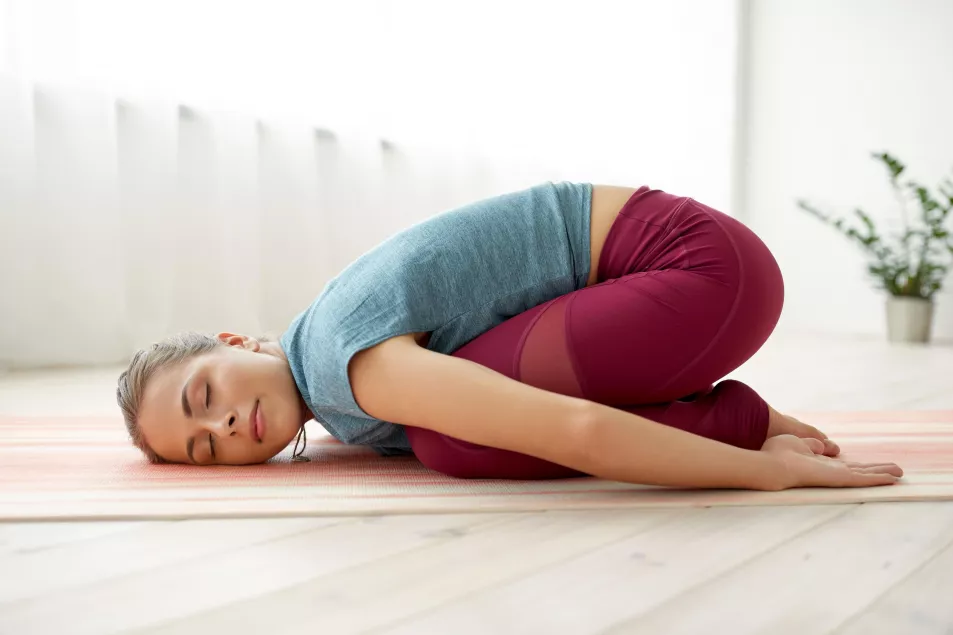It’s not a topic most women feel comfortable talking about. After all, who wants to admit they’ve peed in their pants?
Even a tiny wet patch can cause embarrassment – and sometimes it’s because you’ve just giggled.
But there are preventive measures you can apply to relieve these symptoms, with a few basic lifestyle changes to improve your bladder.
“At certain times in our lives, the pelvic floor muscles may become weak for a number of reasons, including childbirth and pregnancy; decreased muscle tone with ageing; long term straining when constipated; chronic cough; obesity; underuse; and of course – menopause,” suggests Katie Knapton, founder of PhysioFast Online.
A new poll, published as the Royal College of Obstetricians and Gynaecologists launched a new policy position on the care and support women should receive, suggests just over one in five (22%) women across the UK regularly perform exercises to maintain their pelvic floor health. It also found that some 60% of women have at least one symptom of poor pelvic health, such as urinary incontinence and a frequent need to wee.
“The pelvic floor muscles attach directly at the front of your pelvis and form a sling of muscle that attaches to your tailbone at the bottom of your spine,” explains Knapton.
“They support the organs of the bladder, uterus and bowel, which is one of their main functions.” She continues. “Like all muscles, the pelvic floor muscles need to be exercised and the term ‘use it or lose it’ is relevant here.”
View this post on InstagramAdvertisement
Knapton stresses it’s important to make it clear that every single woman needs to do pelvic floor exercises throughout their lives to ensure they have good bladder control.
There are obviously different levels of severity, but she says the earlier it’s recognised and treated, the easier and quicker things can be resolved.
“It’s really important to remember that it is not normal to leak at any age,” highlights Knapton. “And a ‘sneeze-wee’ is not to be accepted or ignored – and needs to be addressed to further avoid deterioration.”
To limit those leaks, here are some suggested exercises and movements for the pelvic floor…
Build on your breathing technique

Any exercise that works with good breathing techniques and muscle activation can help, says Knapton. “So, pilates and yoga can assist with adopting better and appropriate contraction of your pelvic floor – and improve overall core muscles.”
Though there should be a bit of caution as there can be a tendency to ‘overdo,’ she warns, leading to an overactive pelvic floor – and excessive abdominal bracing, which can cause problems too.
“This is where the ion breathing techniques and relaxation positions in yoga come into their own,” says Knapton. “For example, ‘child’s pose’ and ‘happy baby’ are particularly useful to fully relax your pelvic floor.”
Practise your pelvic floor exercises

To activate and lift your pelvic floor from front to back, Lesley Gilchrist, registered midwife and co-founder of My Expert Midwife, says: “Try to imagine you are trying to stop peeing mid-flow, trying to hold in a poo and, at the same time, you are holding a tampon inside your vagina.” She says this will also help you recognise the muscle group you’re aiming to strengthen. “When you know where to focus your awareness, start exercising in a relaxed position – lying down may make it easier to feel what you are doing.”
Perform around 10 short and fast ‘squeezes’ to start with. Then, try to slowly squeeze and slowly relax the muscles – repeat another 10 times.
“As your pelvic floor becomes stronger and you become more practised, you’ll notice that the ‘slow squeeze and release’ becomes easier,” advises Gilchrist.
“You can then add a pause at the peak of your squeeze. Start by counting to three and then slowly increase, up to a count of 10.”
This can take time to achieve, so keep practising, and don’t worry if you feel like you’re struggling.
“Although your low deep abdominal (tummy) muscles will engage when you target your pelvic floor, don’t pull your tummy in. Your buttocks and thigh muscles should also remain relaxed.
“Aim to do your pelvic floor exercises daily,” suggests Gilchrist. “Ideally three times a day.”
Deploy your derrière

“Try to initiate the muscles by tightening and lifting your back passage as if you are holding in wind,” says Knapton.
“Check you are breathing normally when attempting these exercises, avoid any bearing down,” she urges. “It’s important the right muscle contraction is initiated.”
Try to get into the habit of doing some every time you brush your teeth, says Knapton, when you’re queuing, or set a timer on your phone. You can even try downloading an app. She says the Squeezy app is a very popular one!
“Remember #wewon’tpeewitha10103 – 10 short contractions, 10 long contractions, building up to hold for 10, three times daily,” she adds.
Do not expect miracles, says Knapton. It will take time to make a difference, but sometimes people notice an improvement quickly.
“You need to keep going. The sooner you start when you notice symptoms, the quicker you are likely to get results.”







